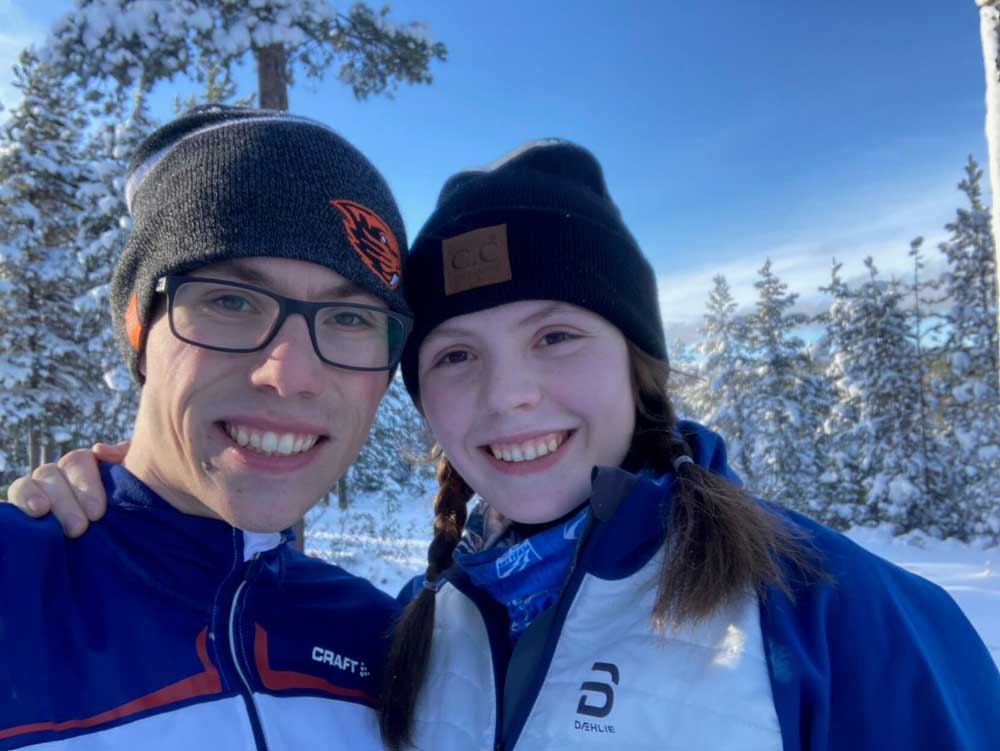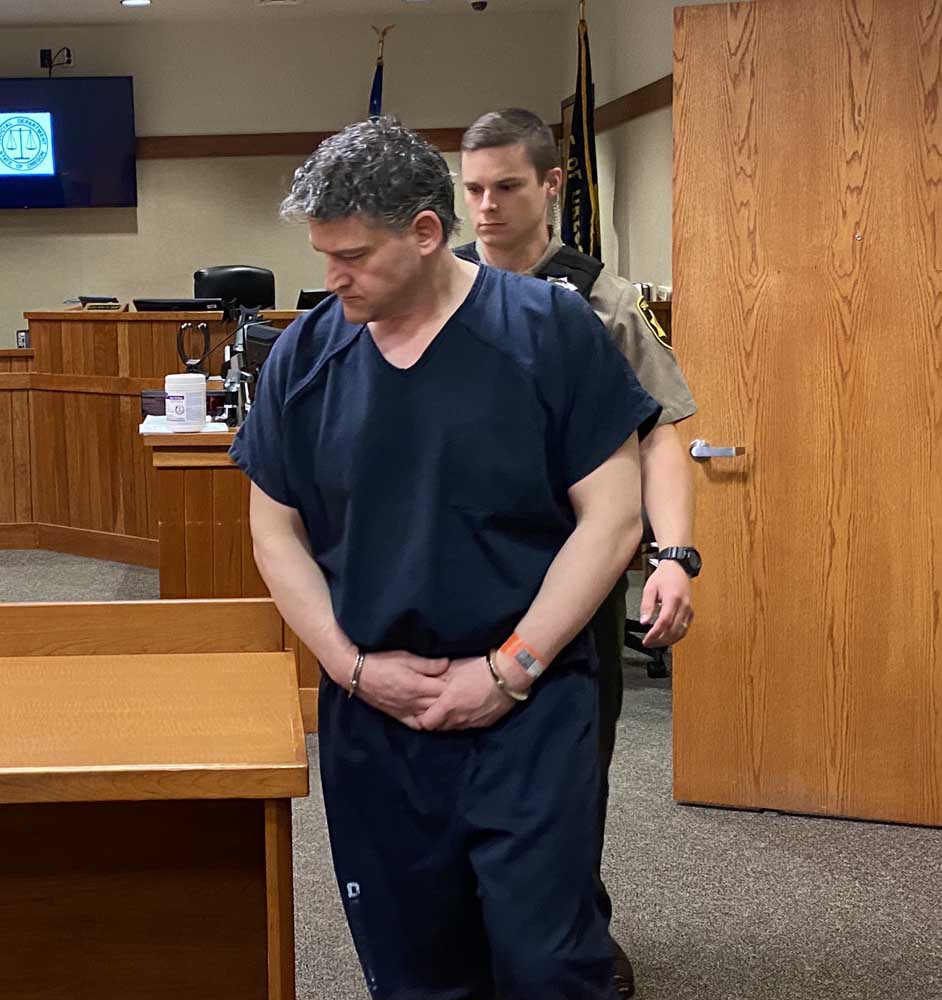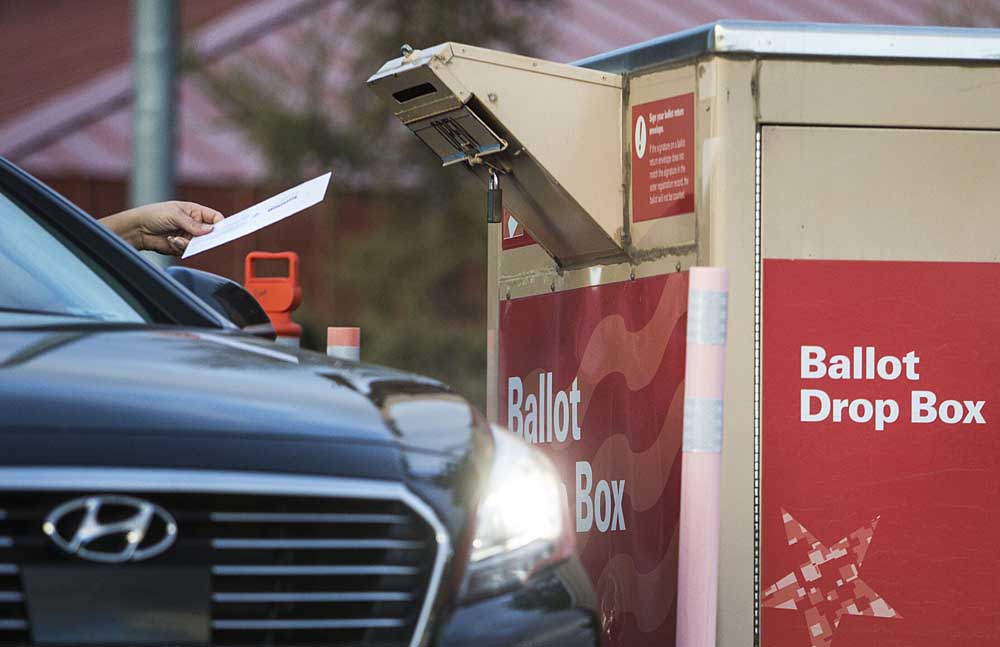Redmond boy, 11, helps family find hiker who died in fall off North Sister
Published 5:30 am Tuesday, August 1, 2023

- Joel Tranby and his girlfriend, Fiona Curley.
Three days after 21-year-old Joel Tranby fell while climbing North Sister, he had not been found.
His family was racked with grief. They clung to the thought — no matter how unlikely — that their loved one might still be alive, suffering on that mountain. Multiple rescue helicopters had already scanned the volcano from the air while crews on foot had searched below an avalanche-prone area that hikers call “The Devil’s Bowling Alley.” But nothing was found and rescue crews did not plan to come back the next day.
For the Tranbys, both a miracle — and closure — eluded them.
As a last resort, the family reached out to an 11-year-old Redmond boy to help find their loved one.
Theo
Theo Kunselman is about to start sixth grade at Obsidian Middle School. He grew up in Germany, the son of a German mother and American father.
His father, Steve Kunselman, grew up in Oregon and has been a family friend of the Tranbys since they attended the same Portland-area Apostolic church. The Kunselmans moved to Redmond six months ago and Theo’s English words are still shaped with a German accent.
For years, Theo has been playing with drones — flying them through the house, around the back yard and over public terrain. He started with toy-like flying things meant for children, but in February graduated to a $450 DJI Mavic used by more serious enthusiasts.
To test the new drone’s capabilities, the family played hide-and-seek recently on public land. Each of them ran out across the territory before Theo set off to find them with his drone, outfitted with livestream video that displays immediately on his cellphone. Recently, Theo used the drone to locate a hiking partner who had gone off trail along Whychus Creek.
Holly Pfeiffer, Joel Tranby’s aunt and a close friend of the Kunselmans, said she rarely saw Theo without it.
“Even when they were going to watch the boys play soccer or whatever, he always brought his drone,” she said.
The Kunselmans heard about the tragedy on North Sister soon after it happened, and got in touch with the Tranby family to offer prayers and support. Pfeiffer said the family realized they needed something else.
“Search and rescue operations had stopped,” said Pfeiffer. “We needed to get that going again and immediately I thought of Theo.”
At 11:30 p.m. on July 18, she called Steve Kunselman to ask if he would hike Theo and his drone eight miles up the mountain the next day to look for their son.
Kunselman didn’t hesitate.
“We wanted to motivate the authorities to get back out there, to prompt the search to continue,” he said.
Kunselman has a mountaineering background, though he hadn’t done much of it for years. Theo had little outdoor experience and had health issues with his feet. He had never hiked as far as would be required to reach the spot where they would send up the drone, a roughly 16-mile hike round trip for an 11-year-old.
Kunselman said there was never a doubt, however, that they would try. Theo immediately said yes, but admitted to having second thoughts as he fell asleep that night, worrying that he too would be injured and add to the strain on rescue crews.
“I kept saying ‘I can’t do it! (then) ‘I can do it!,’” he recalled.
The hike
Theo and his dad woke at 5:30 a.m., reached the Obsidian trailhead and started to hike toward North Sister with Joel’s sister Hannah Tranby, her partner Ben Clawson and a friend. Clawson had already hiked up to the mountain the day before to assist rescue crews and scout a place where Theo could send up his drone.
It was Hannah’s first time meeting Theo. As the crew handed out equipment and made a plan, she felt connected to him and decided the two of them would stick together.
“I knew it would be hard for him,” she said. “And I knew I didn’t want anyone else to get hurt.”
On the hike up, the crew had complicated emotions.
“We were, like, believing in miracles,” said Theo. “When I left I thought we could help save a person’s life.”
“Pure worry and doubt and hope and fear all mixed together in one elaborate cocktail,” said Kunselman. “We have this hope that maybe we can still find him and maybe he’s there and we can get to him. The secondary hope is that, if he’s not alive, can we at least identify his body so we have the knowledge that he’s not out there suffering.”
Not knowing Tranby’s fate made everything more painful.
“As long as those possible futures are open, there’s a certain amount of hope and torture that occurs,” said Kunselman.
Hannah said on the hike up, it was fun to chat with Theo and hear about his life. It kept their minds busy and helped the miles pass faster. When they broke out of the treeline and the trail grew steeper, members of the group took turns carrying Theo. They wanted him to be fresh when they reached the ledge that offered a clear view of the mountain.
The search
The group knew where Tranby had first slipped. They knew where he had lain, injured, for hours until a rockslide swept him farther down the mountain. That’s where they wanted Theo to start looking.
Theo sent up his drone from about a mile from North Sister. First he flew along the bottom of the ravine, where emergency crews had begun their search days prior. There was no sign of Tranby and the drone’s battery was wearing out faster than they expected.
“Looking back, that was a mistake, we shouldn’t have done that,” said Kunselman.
Theo changed the battery and launched a second flight. This time he flew up the glacier and climbed higher on the mountain, then pointed the drone’s camera straight down into chutes and fissures below. The drone was pushed to the limit of its abilities, Theo said, fighting the wind and glitching as he maneuvered it around rock and ice.
His drone did not have an automatic obstacle avoidance feature, which would have helped it navigate the tight spots Theo was attempting to peer into. At one point, the drone nearly crashed.
“I looked to my side and I was two inches away (from the rock),” said Theo. “That could have been the end of my drone and we couldn’t have looked for (him) any more.”
But a few minutes into Theo’s second flight, the crew realized that he had found something. Tension rose, as did hope. On his phone, they first spotted an emergency blanket that had belonged to Tranby’s girlfriend and hiking partner, Fiona Curley. Theo kept inching the drone up inch by inch, zooming his camera in and out when necessary, fighting stubborn glitches that slowed down their progress.
Finally, he located Joel’s backpack cover, then his backpack, then even smaller items like his water bottle and tube of sunscreen in a mountain of fresh scree and rock fall.
Kunselman said it was clear why crews had not looked in that particular crevice.
“Any step there starts an avalanche,” he said. “The terrain up there is so precarious.”
Theo panned the drone desperately, looking for any sign of Tranby himself, but they could find none. Winds whipped up, the drone began glitching and soon its battery was almost depleted. Attempts to recharge in the field failed.
“There was a little bit of the feeling of failure, to be honest,” said Kunselman.
Theo said he felt that too, especially when he saw his crew members crumble — especially Hannah.
“I could feel on all the faces a disappointment,” said Theo. “That was kind of frustrating. If we had just slightly better equipment, we probably would have been able to do it.”
The walk home was grueling. Hannah said that the search exhausted her, both emotionally and physically. It felt good to have done something, she said, but returning without her brother was hard. She made the decision, after an aborted third drone flight, that it was time to head back. The finality of that call didn’t hit her until the group dropped below the treeline, returned to the shadow of the forest and lost sight of the mountain.
“I felt like we were leaving him alone up there for another night,” she said. “I kind of broke down at that point.”
The crew still had a few miles to hike. Hannah carried Theo for the final stretch.
Passing on information
The mood of the group buoyed when the Kunselmans passed on their information — photographs, videos, GPS coordinates — to Lane County Search and Rescue crews. Emergency responders had not seen Tranby’s backpack and personal belongings
before. Evidence of their exact location was enough information to restart the search the next day.
“In the end, that was our goal and that goal got accomplished,” said Kunselman.
The next morning, the Tranby family watched the flight path of emergency helicopters return to the spot Theo had targeted with his drone. It hovered there for a few minutes.
When the flight returned, emergency responders said they had located Tranby’s body just yards away from where Theo found his backpack. Crews said that Tranby likely died in his second fall and did not suffer. But crews said the location where the body was found was too dangerous to attempt a recovery.
Hannah said it was all hard news to take in, but she was heartened by overhearing an emergency crew member say they would never have gone back up, and likely would never have found Joel’s body, if it wasn’t for the drone footage.
“It felt like we did something,” she said. “All the rest of it is too much, but we were able to do something to help.”
It was not the miracle the Tranbys or Kunselmans had hoped for, but knowing did provide a kind of closure.
“I was very proud of my son,” said Kunselman, choking up. “When I told him ‘You need to do this thing that you’re not going to like doing — walking that far up, climbing — you need to do it because there is a possibility someone is suffering quite a bit,’ that he didn’t hesitate. I think he understood in that call the importance of service.”





